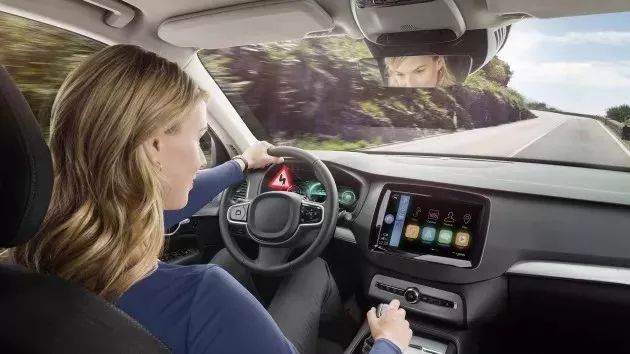
According to Global Market Insights, the global automotive display market is expected to double from the current $15 billion (€13.4 billion) to $30 billion (€26.7 billion) by 2025. Larger, more aesthetically pleasing, and increasingly multifunctional digital displays are becoming key features of modern automotive cockpits. Now, both drivers and passengers expect to enjoy displays similar to those on smartphones and televisions in their vehicles. But has anyone considered whether these displays pose safety risks?

1
U.S. Navy Case
The U.S. Navy recently announced that it would convert all touchscreens on its destroyer fleet to mechanical control screens.
In 2017, the USS John S. McCain collided with a merchant vessel, the Alnic MC. The National Transportation Safety Board (NTSB) found that touchscreens were a significant factor in the accident. While the accident report also mentioned that the crew had not received proper training to operate the touchscreen system’s various functions, the complexity of the touchscreen interface itself posed a potential issue.
As a result, the Navy’s Naval Sea Systems Command conducted a survey to understand officers’ views on touchscreen systems. The outcome? The crew expressed that they preferred touchscreens to have more physical control functions, a sentiment echoed by global automotive safety advocates.
Although most ordinary consumers do not have significant issues using products equipped with more technology, numerous studies indicate that while smart cars have more features, ordinary drivers are often unaware of them. In fact, some car brands even offer additional training courses to help customers better understand how to use new features provided by their vehicles.
Moreover, research shows that the infotainment displays currently equipped in cars require higher cognitive demands from drivers, making it unsafe to use such displays while driving.
Furthermore, Navy officers reported that frequently using touchscreen interfaces made them feel significantly more fatigued. Therefore, they expressed a preference for mechanical controls.

1
Current State of In-Car Touchscreens
However, at the same time, the automotive industry is preparing to install larger touchscreens with more built-in functions for drivers. On August 12, Bosch announced the launch of a new type of in-car 3D display, reportedly utilizing passive 3D technology to generate realistic three-dimensional effects, helping drivers grasp visual information more quickly compared to traditional displays. Additionally, the stereoscopic view effect of this display can assist drivers in quickly capturing important visual information, including assist system prompts and traffic congestion alerts.
Unlike the U.S. Navy, automakers can profit from such in-car user interfaces through commercial partnerships, automotive applications, and acquired personal data, so they are unlikely to abandon this lucrative market.
However, the fact is that touchscreens require drivers to have higher hand-eye coordination compared to traditional buttons and dials. Research shows that simply having a larger touchscreen prompts drivers to divert their gaze from the road more frequently. Although voice commands can alleviate some of the pressure, such systems add extra cognitive load, and most people prefer using visual interfaces.
1
Regulatory Actions
Despite the obvious facts and pressure from major regulatory bodies, most agencies have only expressed concerns about potential safety hazards without taking substantial action. For example, in the U.S., while the National Highway Traffic Safety Administration (NHTSA) acknowledges that distracted driving is one of the leading causes of traffic accidents, no measures have been taken regarding the issues posed by user interfaces equipped in modern vehicles. Meanwhile, the UK Highways Agency stated that while touchscreens are poor from a “safety perspective,” they have not provided an alternative solution.

1
Conclusion
In fact, most automakers are investing heavily in research and development of automotive user experience (UX), making it impossible to abandon large-scale reforms of automotive UX. Therefore, car manufacturers are likely to strongly oppose government interventions, such as simplifying user interfaces. Additionally, consumers may not be willing to accept legislation aimed at reducing technological features in vehicles. However, there are still some safety-conscious drivers who wish for automotive control systems to return to the basics.
You May Be Interested in These Activities





The Gasgoo Automotive Information Department is currently recruiting several automotive editors in the Shanghai/Wuhan area. Requirements: Good writing skills, passion for cars. Contact: Ms. Han 15618597667. Please send your resume to: [email protected]